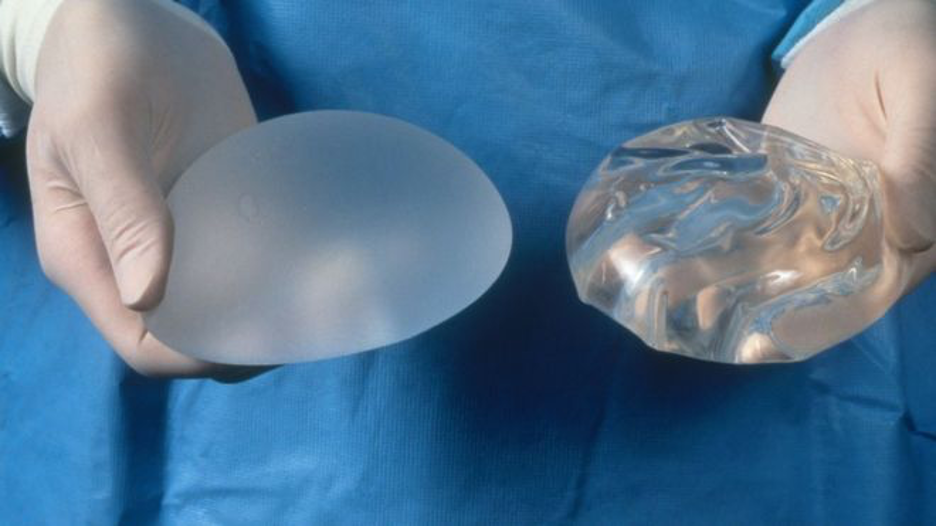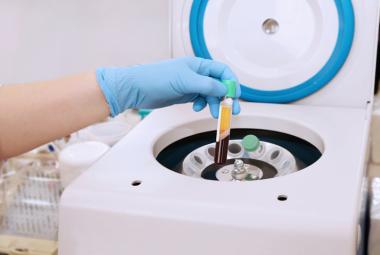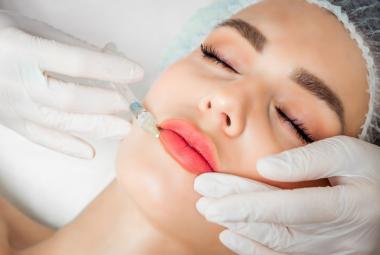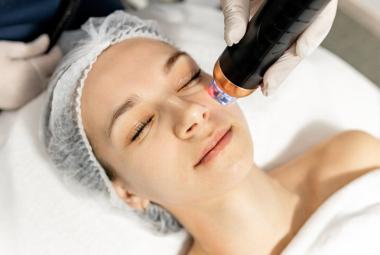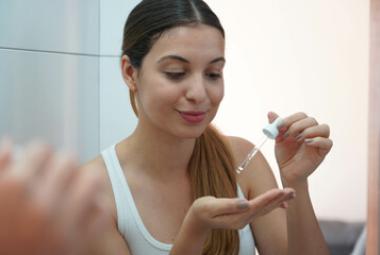Introduction
It is widely accepted that breastfeeding is the optimal method of infant feeding because of its many benefits for both the mother and child.1 The American Academy of Pediatrics recommends exclusive breastfeeding during the first six months and continued breastfeeding along with complementary foods during at least the first year of a baby’s life.2 Although many new mothers intend to exclusively breastfeed, barriers, such as returning to work, lack of support, and insufficient breastfeeding education, may make it difficult for women to achieve their breastfeeding goals.3 Previous cosmetic* breast augmentation may be another perceived barrier to breastfeeding. It is therefore important for future mothers to understand the potential implications that breast augmentation may have on breastfeeding.
Breast Augmentation
Cosmetic breast surgery is popular in the United States. According to the American Society of Plastic Surgeons, breast augmentation was the most popular cosmetic surgery in 2019 with 299,715 women undergoing the procedure.4 Of these, 29% were between 20 and 29 years old and 37% were between 30 and 39 years old, suggesting that roughly two-thirds of women getting breast implants were in their prime childbearing years.4 Thus, it is reasonable to assume that some of these women will become pregnant and may want to breastfeed after their breast augmentation surgery.
There are several options for breast augmentation surgery. The patient and plastic surgeon should work together to decide what type of implant, surgical approach, and implant placement is best for the patient given her anatomy, aesthetic goals, and potential plans for future breastfeeding. As with any surgery, with breast augmentation there is a risk of damage to important tissues and systems required for optimal breast function. In the breast, certain nerves are crucial to breastfeeding, and damage to these nerves, as well as glandular tissue, could potentially affect a woman’s ability to produce sufficient milk. Table 1 below summarizes the most popular options for surgery.
Table 1. Options for breast augmentation surgery and effects on breastfeeding.
| Options | Description | Effect on Breastfeeding | |
|---|---|---|---|
|
Implant Type |
Saline |
Composed of an outer shell and filled with sterile salt water |
No evidence of difference based on implant type |
|
Silicone
|
Composed of an outer shell and filled with silicone gel |
||
|
Surgical Approach |
Periareolar incision |
Made around the inferior aspect of the nipple |
No evidence of difference based on surgical approach |
|
Inframammary incision |
Made in the crease under the breast |
||
|
Implant Placement |
Retroglandular |
In front of the pectoral (chest) muscle, behind glandular tissue |
More likely to lead to breastfeeding complications |
|
Retromuscular |
Behind the pectoral muscle |
Less likely to lead to breastfeeding complications |
Breastfeeding with Implants
Modern surgical techniques aim to preserve nipple sensitivity and lactation ability, and, thus, for many women with breast augmentation the ability to breastfeed is preserved to some extent.5 However, breastfeeding initiation rates tend to be slightly lower among women with breast augmentation.6,7 A cohort study published in 2019 that followed over 3,500 women found that 79% of women reported the ability to breastfeed at least 1 child following augmentation surgery.8 This is slightly lower than the national breastfeeding initiation rate of 84% that was reported by the CDC Breastfeeding Report Card in 2017.9 Similarly, a study in Argentina reported that 93% of women who had breast augmentation surgery prior to having children were breastfeeding (either exclusively or supplemented with formula) at 30 days, compared to 99% who had not had surgery.10 There may be several reasons that women with implants decide not to breastfeed including fear that breastfeeding may change the aesthetic appearance of their breasts, pain from breast swelling, or fears that toxic chemicals may pass from the implant to the breastmilk.6,8,11
Some evidence indicates that women with breast implants may have more difficulty with lactation than non-augmented women.12 Exclusive breastfeeding is still typically lower among women who have had augmentation than among women without breast augmentation, with insufficient milk production as the most commonly reported complication.5,8,10,13 Importantly, many mothers (regardless of augmentation status) perceive an inability to produce enough breast milk to support adequate growth of their babies, although this perception may not reflect reality.14 Interestingly, the ability to exclusively breastfeed does not seem to differ by surgical approach (periareolar vs. inframammary) or type of implant (saline vs. silicone).7,8,13,15 Conversely, placement of the implant may impact breastfeeding. Jewell et. al.8 found a slightly increased risk of inadequate milk production among women with retroglandular implant placement compared to retromuscular placement. In another study, retroglandular implant placement was associated with greatly reduced breastfeeding rates (17% probability of breastfeeding vs. 82% in those with retromuscular implants).7,13,15
Importantly, there is no evidence to date that suggests breastfeeding with silicone implants is dangerous to the baby. Saline and silicone implants are FDA approved and must undergo extensive testing for safety but, like all medical devices, carry with them a small risk of adverse health effects.16 There is no difference in the silicone/silicon levels in breastmilk from women with silicone implants versus women without implants.17 Interestingly, compared to cow’s milk and commercially available infant formula, breast milk from women with silicone implants had significantly lower silicon levels.17
Conclusion
There is a need for more research exploring the effects of breast augmentation on breastfeeding. If you are considering having cosmetic breast augmentation surgery and think you would one day like to breastfeed, it is important to talk with your plastic surgeon about the risks and benefits of the surgery. If you have already had surgery and are pregnant or planning on becoming pregnant, your obstetrician or a lactation specialist can help you formulate a plan that empowers you and helps your baby receive optimal nutrition.
*It is important to note the information in this article applies to cosmetic breast surgery only; breastfeeding rates following reconstructive surgery (i.e. after mastectomy or tumor resection) are highly variable.18
Hana Setterquist, MS
Christine D Garner, PhD, RD, CLC
References:
1. Centers for Disease Control and Prevention. Breastfeeding. Available at: https://www.cdc.gov/nutrition/infantandtoddlernutrition/breastfeeding/i…. Accessed August 8, 2020.
2. Johnston M, Landers S, Noble L, Szucs L, Viehmann L. Breastfeeding and the use of human milk. Pediatrics. 2012;129(3):e827-841.
3. Sayres S, Visentin L. Breastfeeding: Uncovering barriers and offering solutions. Current Opinion in Pediatrics. 2018;30(4):591-596.
4. Plastic Surgery Statistics Report. 2019; 1-25. Available at: https://www.plasticsurgery.org/documents/News/Statistics/2019/plastic-surgery-statistics-full-report-2019.pdf.
5. Lund HG, Turkle J, Jewell ML, Murphy DK. Low Risk of Skin and Nipple Sensitivity and Lactation Issues After Primary Breast Augmentation with Form-Stable Silicone Implants: Follow-Up in 4927 Subjects. Aesthetic Surgery Journal. 2016;36(6):672-680.
6. Roberts CL, Ampt AJ, Algert CS, Sywak MS, Chen JS. Reduced breast milk feeding subsequent to cosmetic breast augmentation surgery. The Medical Journal of Australia. 2015;202(6):324-328.
7. Cheng F, Dai S, Wang C, Zeng S, Chen J, Cen Y. Do Breast Implants Influence Breastfeeding? A Meta-Analysis of Comparative Studies. Journal of Human Lactation. 2018;34(3):424-432.
8. Jewell ML, Edwards MC, Murphy DK, Schumacher A. Lactation Outcomes in More Than 3500 Women Following Primary Augmentation: 5-Year Data From the Breast Implant Follow-Up Study. Aesthetic Surgery Journal. 2019;39(8):875-883.
9. Centers for Disease Control and Prevention. Breastfeeding report card United States, 2020. 2020. Accessed Sept 24, 2020. Available at: https://www.cdc.gov/breastfeeding/pdf/2020-Breastfeeding-Report-Card-H…
10. Filiciani S, Siemienczuk GF, Nardín JM, et al. Cohort study to assess the impact of breast implants on breastfeeding. Plastic and Reconstructive Surgery. 2016;138(6):1152-1159.
11. Koren G, Ito S. Do silicone breast implants affect breastfeeding? Canadian Family Physician Medecin de famille canadien. 1998;44:2641-2642.
12. Hurst NM. Lactation after augmentation mammoplasty. Obstetrics and Gynecology. 1996;87(1):30-34.
13. Cruz NI, Korchin L. Breastfeeding after augmentation mammaplasty with saline implants. Annals of Plastic Surgery. 2010;64(5):530-533.
14. Li R, Fein SB, Chen J, Grummer-Strawn LM. Why mothers stop breastfeeding: mothers' self-reported reasons for stopping during the first year. Pediatrics. 2008;122 Suppl 2:S69-76.
15. Bompy L, Gerenton B, Cristofari S, et al. Impact on breastfeeding according to implant features in breast augmentation: A multicentric retrospective study. Annals of Plastic Surgery. 2019;82(1):11-14.
16. U.S. Food and Drug Administration. Risks and complications of breast implants 2020. Available at: https://www.fda.gov/medical-devices/breast-implants/risks-and-complications-breast-implants. Accessed August 8, 2020.
17. Semple JL. Breast-feeding and silicone implants. Plastic and Reconstructive Surgery. 2007;120(7 Suppl 1):123s-128s.
18. Lee GE, Rosenberg SM, Mayer EL, et al. Contemporary management of breast cancer during pregnancy and subsequent lactation in a multicenter cohort of young women with breast cancer. The Breast Journal. 2019;25(6):1104-1110.

